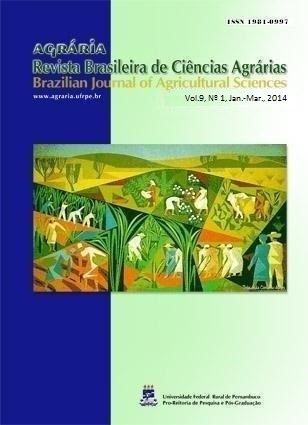Effect of the rainy season on the extraction of bivalve mollusc Anomalocardia brasiliana (Gmelin, 1791)
DOI:
https://doi.org/10.5039/agraria.v9i1a2947Keywords:
capture, clam, fishing method, fishermenAbstract
The mollusc Anomalocardia brasiliana is sensitive to environmental variations with high mortality due to rains. In the state of Pernambuco, among the species of larger fisheries production, this clam has great economic importance. The study aimed to evaluate the remaining population of A. brasiliana of beach Mangue Seco, during the rainy and dry season, after the capture by fishermen and three moments of sampling. In evaluation of data three factors were considered: period; type of extraction and moment of sampling. Response variables analysed were total length and total number of animals sampled. The study was conducted in August 2009, after the rainy season, and in January 2010, the dry season in northeastern Brazil. The amount of captured animals with recommended size for fishing (> 20 mm) was above 80% in August, and below 20% in January. There was no significant difference between the sizes of the animals collected. The rainy season in northeastern Brazil influences the population of A. brasiliana, causing reduction in the number of clams, however, at this time of year there is a higher frequency of adults.
Downloads
Downloads
Published
How to Cite
Issue
Section
License

This work is licensed under a Creative Commons Attribution-NonCommercial 3.0 Unported License.


